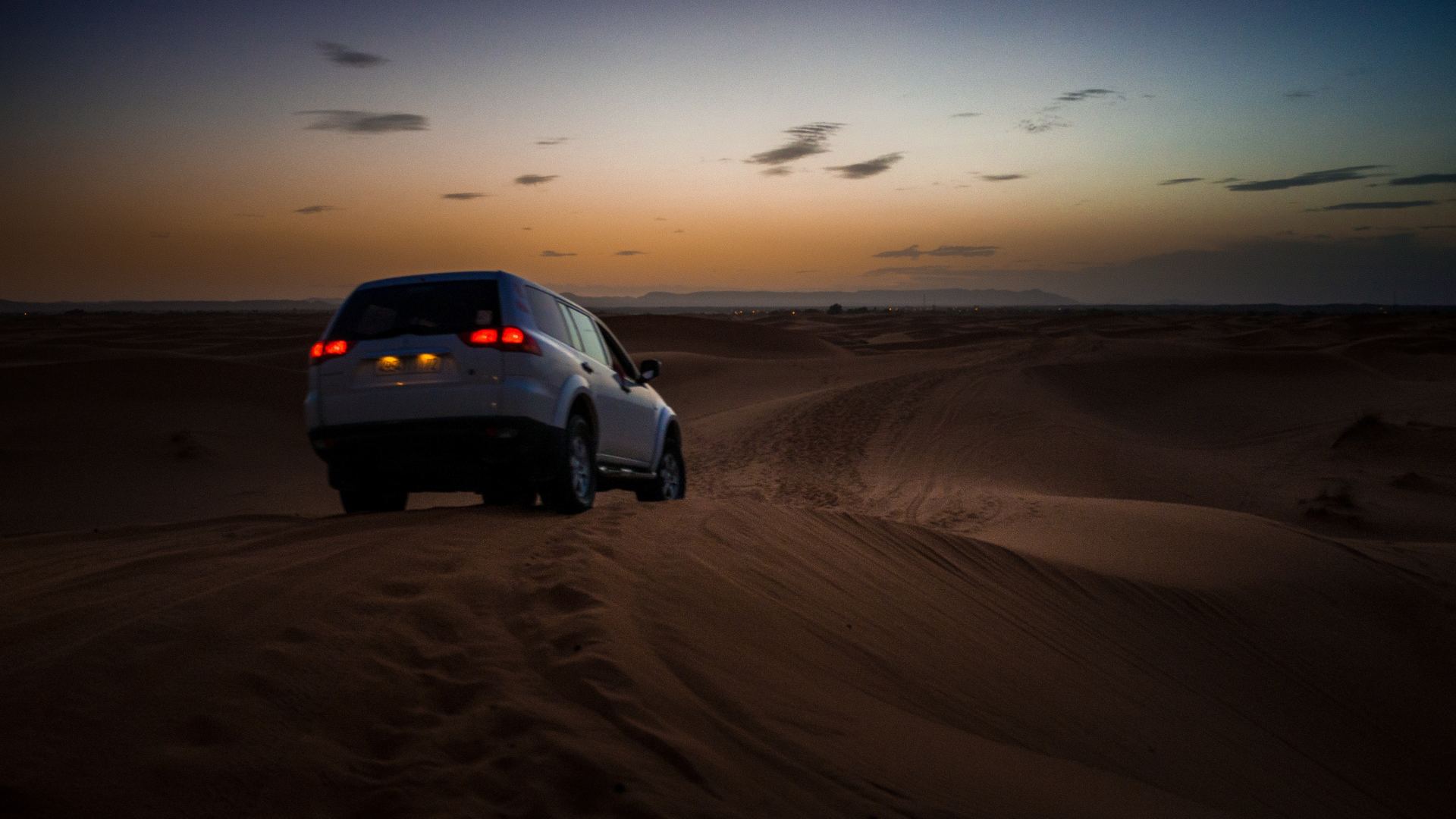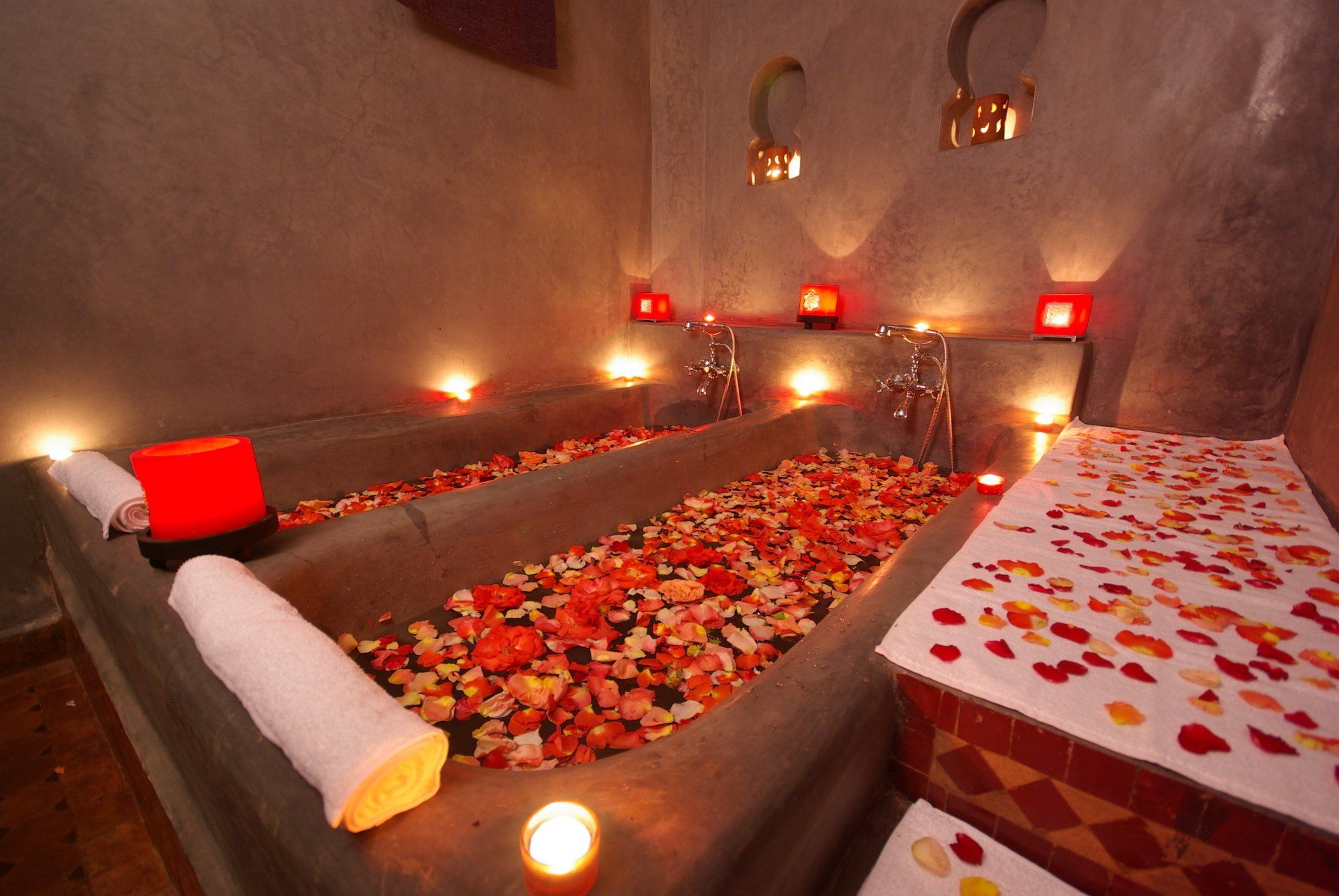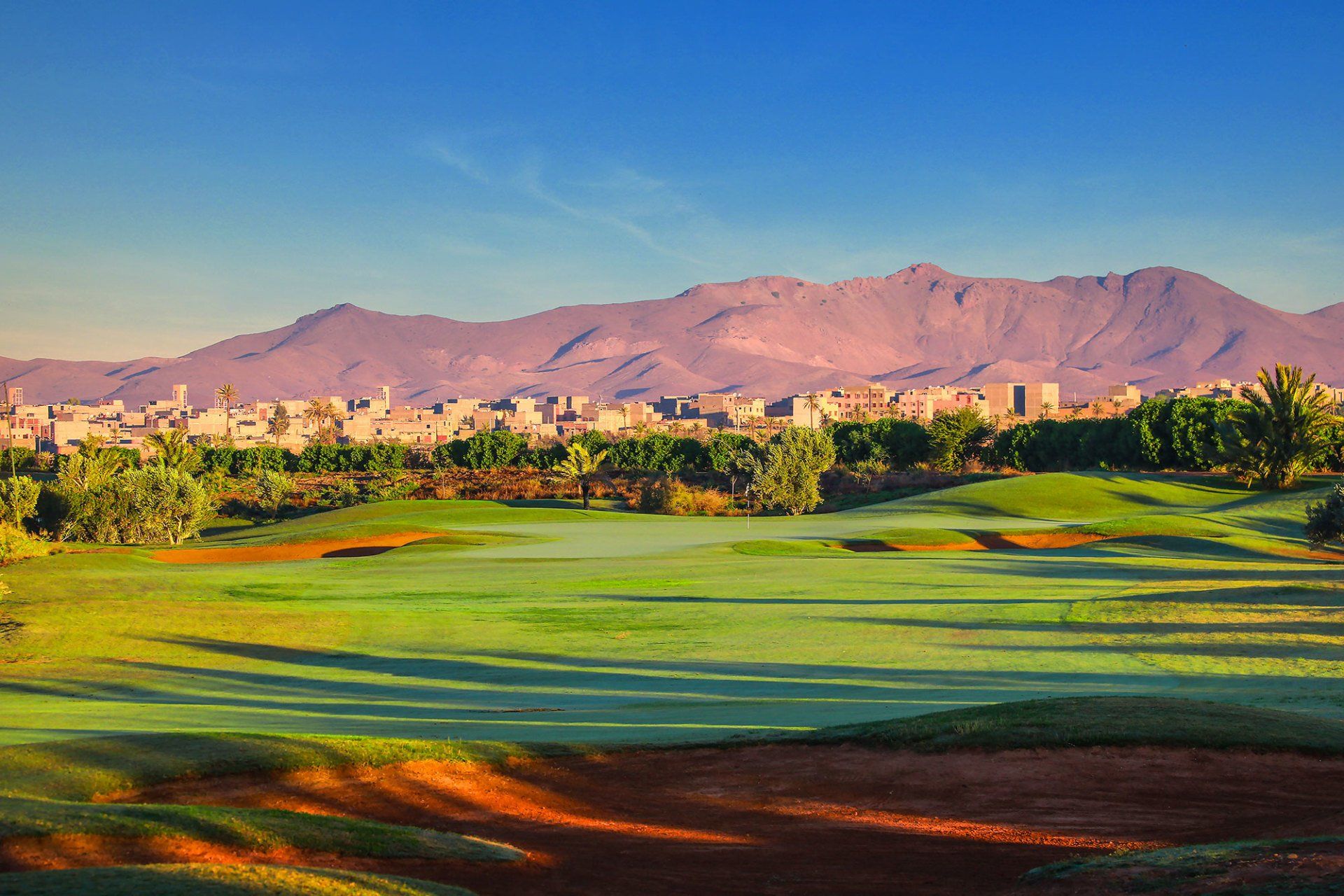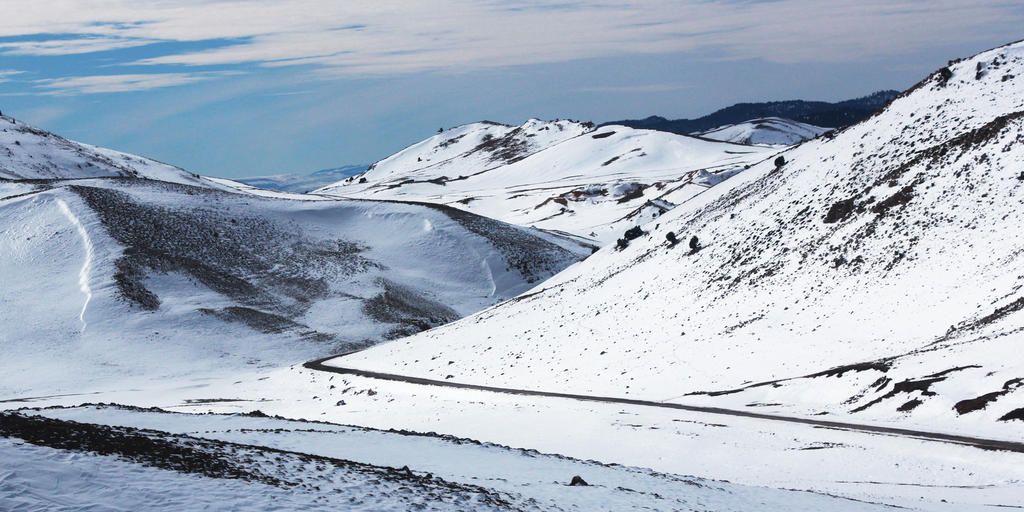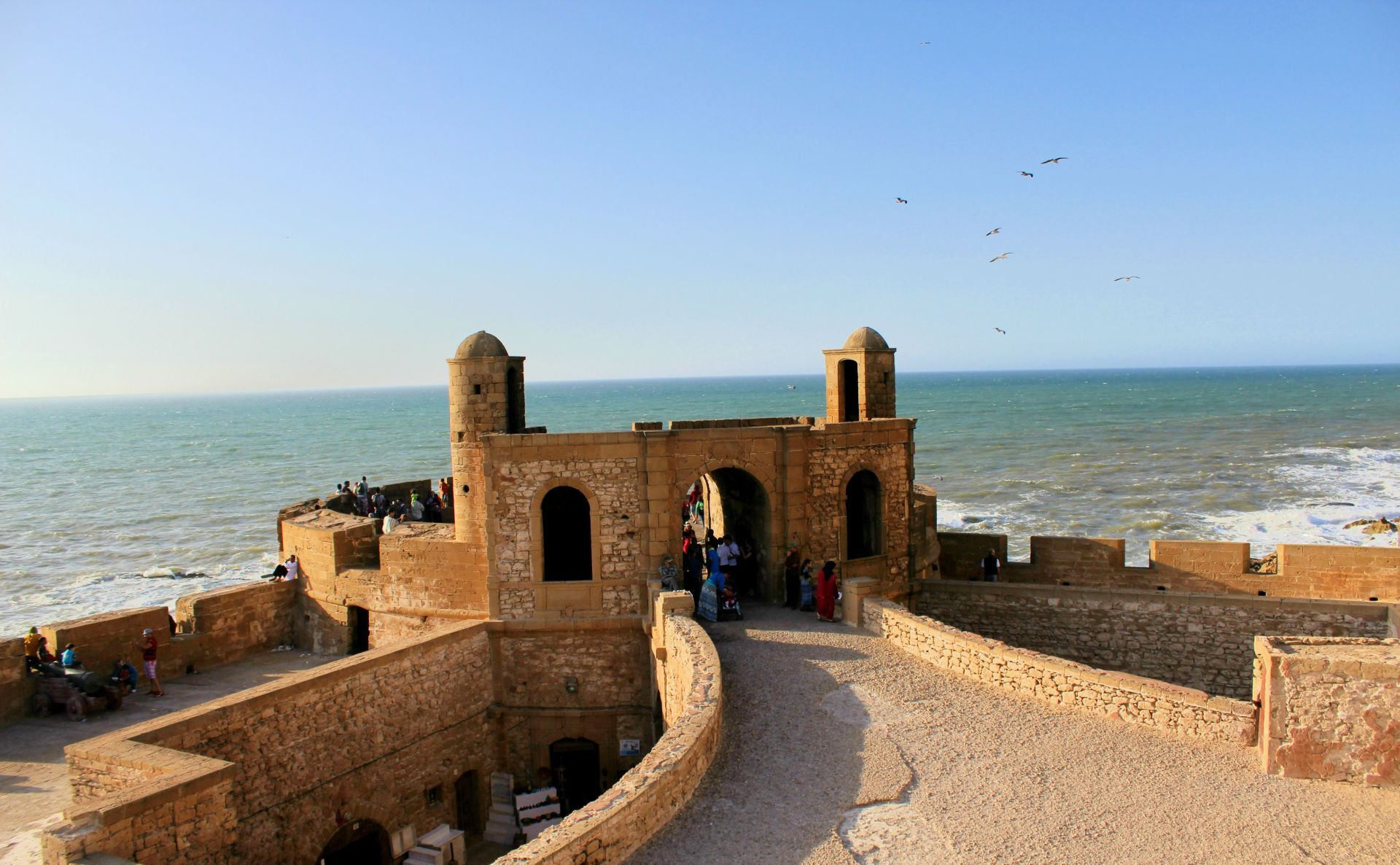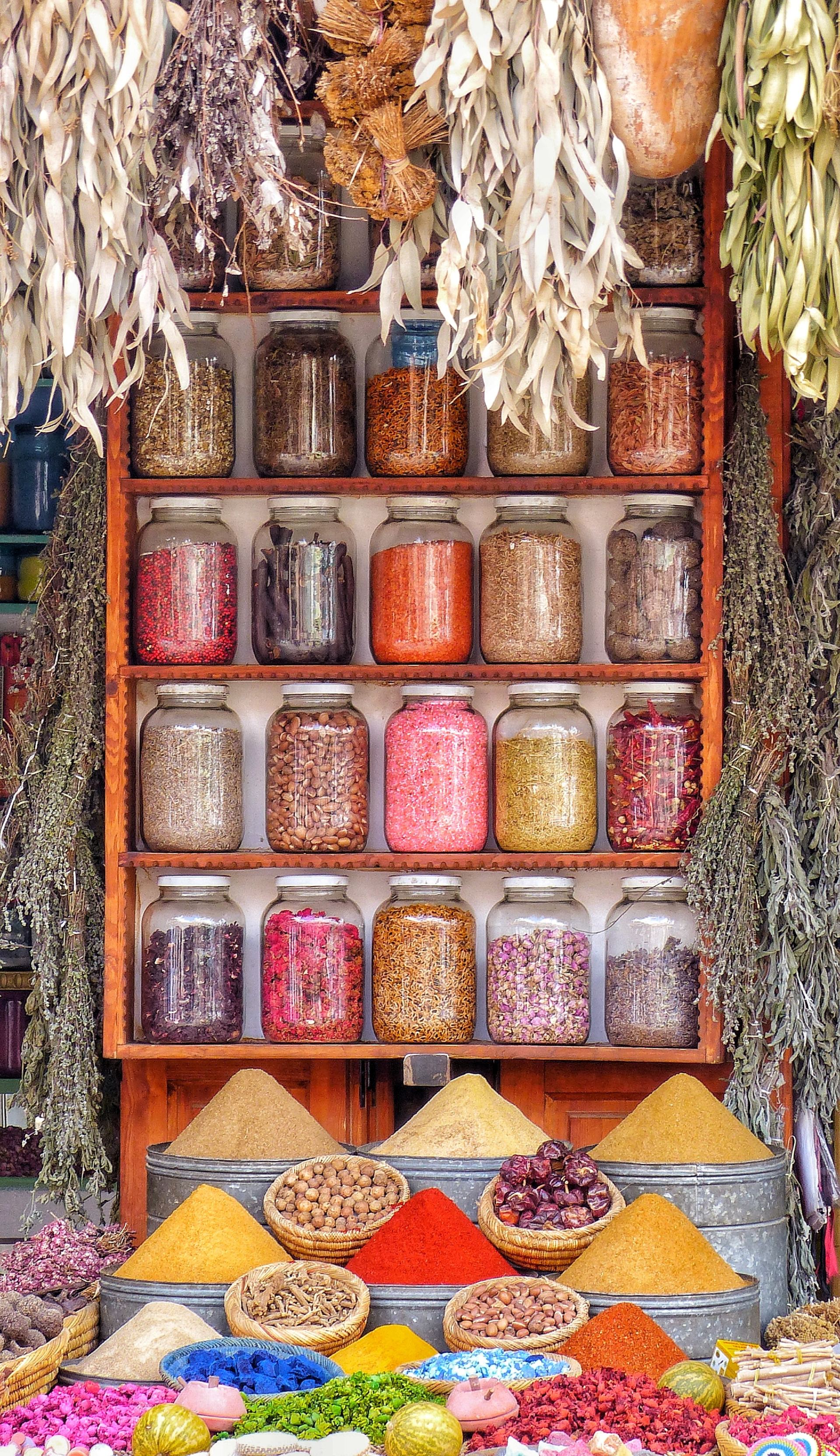Attractions
Marrakech
One of the most outstanding advantages of the Riad de la Belle Epoque is its location, placed in the center of the city of Marrakech, known as the Medina. Marrakech with its extensive palm grove and the snow-capped peaks of the Atlas Mountains has held the honorary title of African capital of international tourism at different times. Famous people and families of the European nobility have been captivated by the magic and mystery of the largest medina in the Maghreb with its 600 hectares.
Discover all its secrets
This tourist leadership has also contributed the fact that its medina was declared a World Heritage Site in 1985, which ensures the conservation of its architectural wealth. This guarantee attracted foreign investors who decided to invest in the elegant traditional houses to convert them into hotels or use them as a second residence. Marrakech is the main tourist destination of Morocco and offers countless attractions and leisure activities, which you can enjoy staying at our hotel in the Medina, in the heart of Marrakech (Morocco). Here is a summary of some of the best things to do during a vacation in the Ocher City:
The city is located at the same distance from the Atlantic Ocean as from the great Sahara desert. The geographical location of the city is N 31º 37 W 7º 36, 490 m above sea level. The Berbers call it “Temrakesh” and the Arabs “Merrakesh-el-Hamra” which means Marrakech, the red one.
Marrakech is located 598 km from Tangier, 467 km from Meknes, 483 km from Fez, 176 km from Essaouira and 321 km from Rabat. It is an inland city located in the middle west of the country, about 180 km from the Atlantic coast. It borders to the east with the Great Atlas mountain range and to the southeast with the Ourika valley.
Jemaa-el-Fna
The great square of Jemaa-el-Fna is the center of the life of the medina during the day and at night. During the day, it is a market and meeting place with stalls where oranges, nuts and other typical products are sold. Starting at lunchtime, the square begins to fill with artists who share the space with the vendors, although it is really dark when the place comes alive. At 17.00, the rattle of the carts announces the arrival of the food stalls, in which all kinds of vegetables, meat and fish dishes are prepared.
At 21.00, the square is full of artists of all kinds, from snake charmers, singers and musicians to storytellers and acrobats. The faquires and the healers join the show offering healing potions for any ailment or ill imaginable.
The public is mostly Moroccan, this is not only a spectacle for tourists, but it is an experience that allows to witness a part of the life of the city that has changed little since medieval times.
Jemaa-el-Fna is surrounded by cafes and restaurants ideal for escaping the hustle and bustle with mint tea, coffee or a light lunch. Café Argana, Café de France and Café Glacier are three coffee shops with tables on the terrace and wonderful views.
Majorelle Garden and Museum of Islamic Art
This botanical garden, owned by fashion designer Yves Saint Laurent, was created in the 1920s by French artists Jacques and Louis Majorelle.
Surrounded by walls, beautiful gardens, swimming pools, giant cacti, bamboo, coconut trees and banana trees contrast with the blue tones of the roads, pavilions and walls. Only Yves Saint Laurent could think of painting the pots and walls with children's watercolors, but the final effect is surprising and original.
The former study of the Majorelle brothers is now the Museum of Islamic Art.
Saudi Tombs
It is one of the most visited places in the country. Formerly, they could only be reached through the adjacent mosque, so they were preserved in excellent condition until they were rediscovered and opened to the public in 1917.
The interior garden is dominated by two independent mausoleums, with more than 100 graves decorated with mosaics scattered around. The main structure of the tombs was commissioned by Sultan Ahmed El Mansour for himself and his family and date back to the 16th century. In total, there are about 66 members of the Saudi royal family buried here along with numerous servants and remains of older graves whose identity has been lost.
Inside the mausoleum, the tombs are decorated with great wealth, majestic dome-shaped ceilings, stalactite-shaped plasters, intricate carvings and marble pillars.
El Badi Palace
This ancient palace, whose name means “the incomparable one”, was built by Saudi monarch Ahmed Al Mansour in 1578. In his time it became one of the most beautiful palaces in the world, with 360 rooms sumptuously decorated with marbles, gold, ivory , onyx, cedar wood and semiprecious stones. In addition, it had a huge central courtyard with ponds, fountains and gardens at different levels.
In 1696, the Alawish Sultan Moulay Ismael moved the capital of the country to Meknes and stripped the palace of all the valuable materials that decorated it, leaving only adobe walls. Little remains of its glorious past and present, the battlements of the battlements surround a wide empty space that once occupied the gardens and rooms.
The main attraction today is the stork population that has occupied the remains of the building. However, every summer, the palace grounds come back to life for two weeks with the National Festival of Popular Arts. In one of the corners of the enclosure stands the 12th century minbar (chair) of the Koutoubia mosque.
Koutoubia Mosque
The minaret of the Koutoubia mosque is the first sight of Marrakech when approaching to the city. Built in the 12th century, it is the tallest building in the city and one of the oldest monuments of Moroccan classical architecture. Each facade and arch of the minaret is different.
Originally, the minaret was covered with plaster and each level was painted in order to darken the intricate carvings of the masonry. Attempts to restore it have been met with protests, as many people believe that the restoration will detract from the beauty of the building.
The design of the building can be appreciated in all its splendor from the huge gardens surrounding the mosque. Also contain the remains of an Almoravid palace and the excavations of an older mosque that was demolished, because it was not properly aligned with Mecca.
Souks
The main souks are located past the arch located north of Jemaa-el-Fna. Although at first glance they may seem unbeatable, it is not so difficult to be guided by them. Each section specializes in one type of items (chilabas, slippers, spices, jewelry, etc.). Lotions and medicinal potions are very interesting, especially those aimed at keeping jinn (spirits) away, responsible for a lot of evils. Even if you do not intend to buy, it is worth visiting this area and let yourself be soaked by the atmosphere.
Although they cannot be compared with those of Fez, you would have them in Marrakech. You can find their workshops to dye leather skins and their huge pools with colored dyes, they also deserve another visit. Historically, dyes were made using materials as diverse as pigeon droppings or grenades, but nowadays most use chemical pigments. However, the procedures and materials used have hardly changed for centuries.
The skins that are dyed belong to cows, goats or camels, and after the dyeing process they are stretched and allowed to dry. The workers of the would have are mostly local artisans who sell their items in the souks of Marrakech.
Menara Gardens
With the Atlas Mountains as a backdrop, it is not surprising that these gardens are one of the most photographed places in Morocco. It is also a very popular place for picnics. The best time of day to visit them is late in the afternoon, when most tourists have left.
La Menara, built in the 12th century by the Almohads, was conceived more as a farm than as gardens. The land contains more than 30,000 olive trees around a magnificent pond with fish that occasionally appear outside the surface to the surprise of visitors.
The old pavilion (menzeh) was built later, in 1870, and from the first floor balcony you can enjoy wonderful views of the vast expanse of water and the mountains in the distance.
Museums
Marrakech has several excellent museums located in historic buildings that house beautiful collections of local crafts and art. The Musée Dar Si Saïd (Museum of Morocco) contains an official exhibition of carpets, carvings, jewels, musical instruments and weapons located in a 19th-century house where the royal chamberlain lived, Sidi Said.
Close to this museum is the Musée Tiskiwin, a beautiful riad that contains a magnificent private collection of local handicraft items that belonged to a Dutch expatriate named Bert Flint. It is a small and cozy museum that, although it contains a collection with objects that seem randomly selected, has a lot of charm.
Located in the heart of the souk, the Musée de Marrakech (Museum of Marrakech) occupies another restored 19th-century mansion built by the Menebha family and contains works of art, carpets, jewelry, furniture, ceramics, fabrics and manuscripts. The visit to this museum can be combined with the beautiful Ben Youssef Medersa, an old Koranic school whose corridors and rooms are decorated with stucco, tiles and carved cedar wood.
A little further away, on the same street, is Koubba el Badiyin, the only remnant left of the buildings that the founders of the city built, the Almoravids.
Marrakech and surroundings. Main activities.
Adventure
Whether in buggy, quad or on the back of a camel, Marrakech offers many possibilities to discover the magic and mystery of the desert.
Hammams
Relaxation centers, balneotherapy, fitness, saunas, swimming pools and spas.
Golf
Amelkis Golf Marrakech or Palmeral golf that has been chosen in 2006, 2007 and 2008 the best Golf Resort in Africa by the World Travel Awards.




